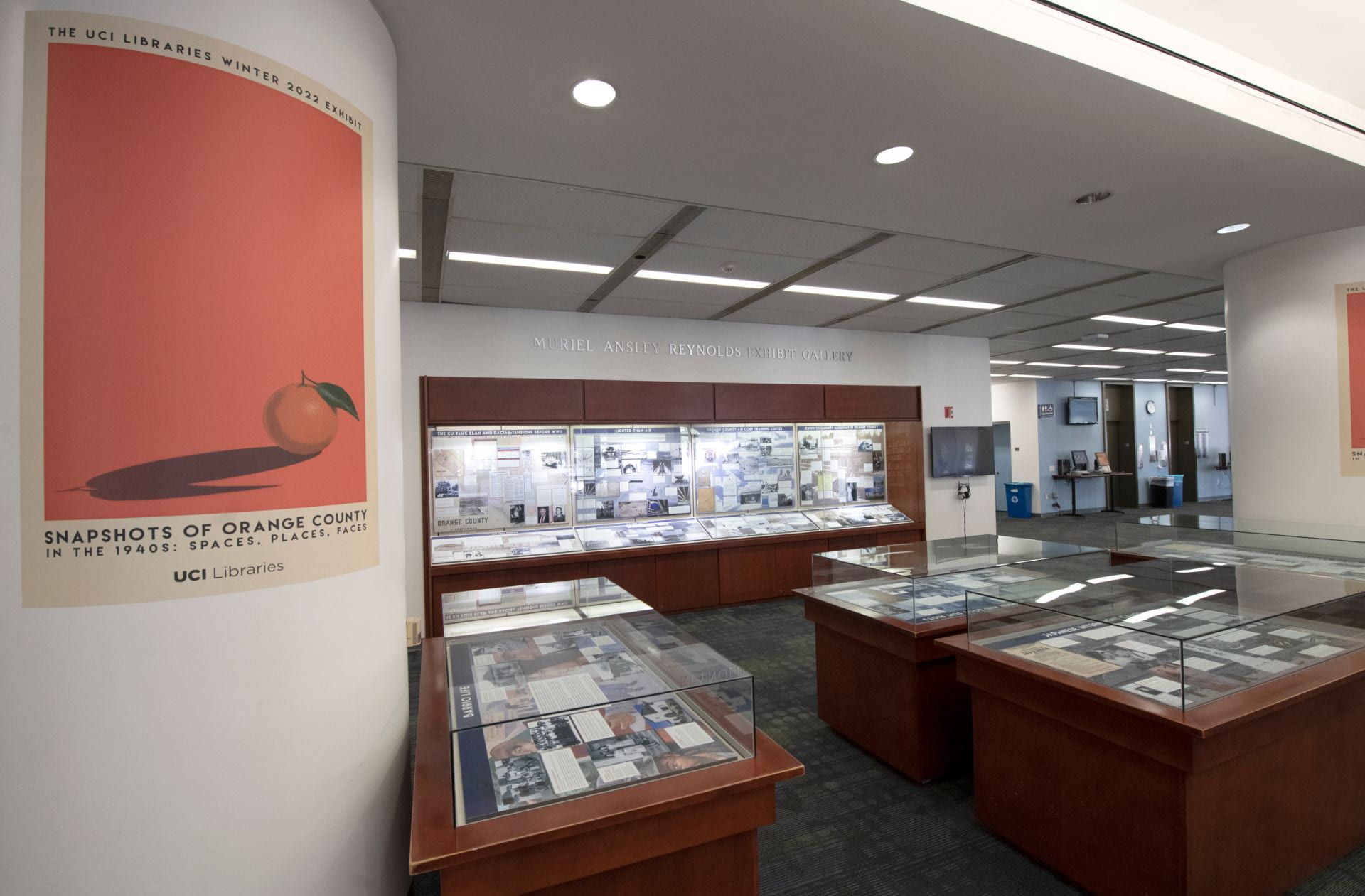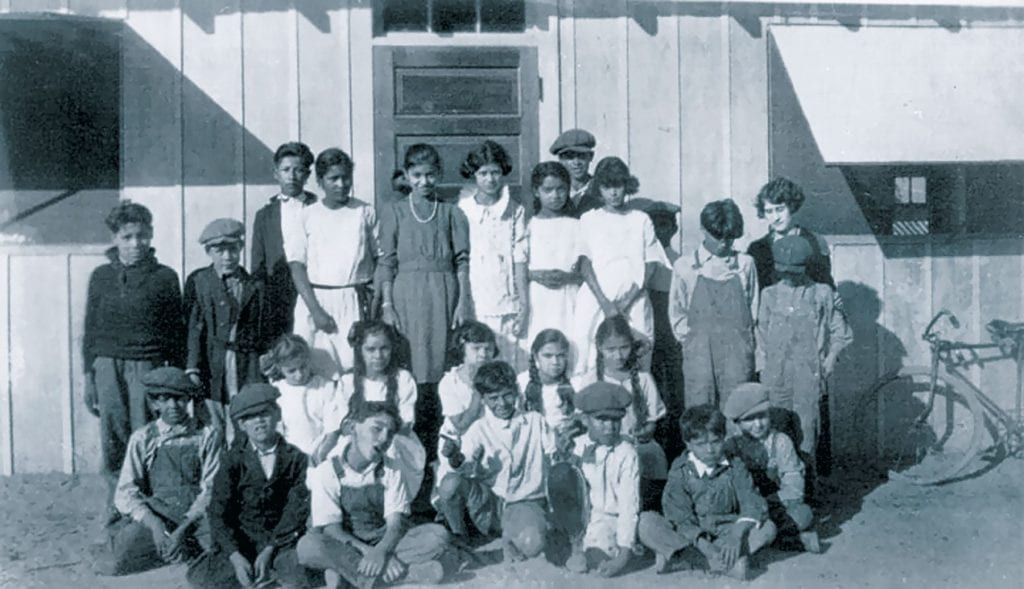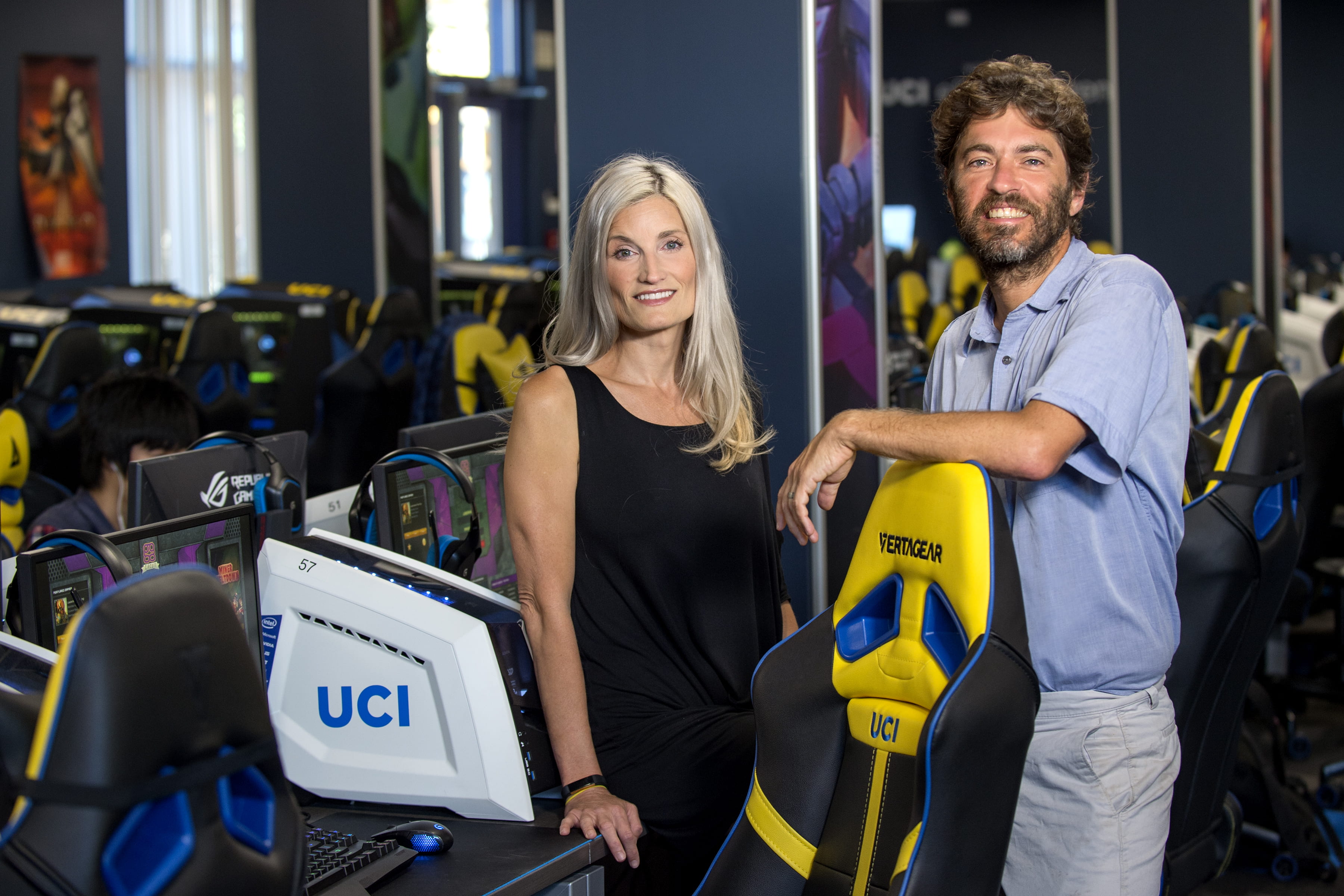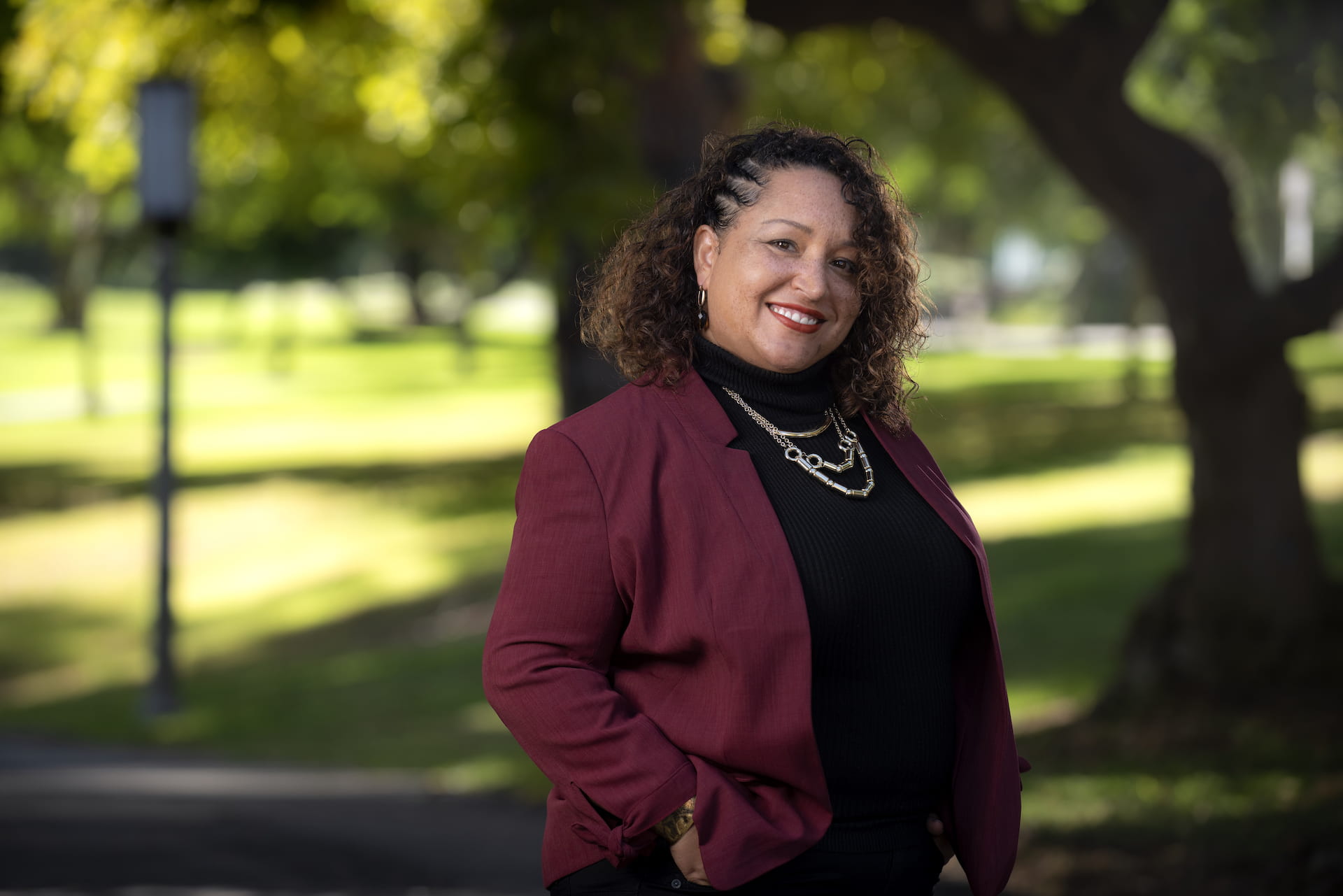Exhibit explores O.C. in the 1940s
UCI Libraries’ curation team shares inspiration, intent behind displays

According to Rebecca Erbelding, lead historian of “Americans and the Holocaust” at the United States Holocaust Memorial Museum, more than 250 libraries nationwide applied to be in the initial cohort of 50 to host the traveling exhibition. Selection criteria included the creativity and strength of a library’s proposed complementary programs, the level of support from the community and the reasons for the library’s interest.
Per Erbelding, “The UCI Libraries staff wrote a phenomenal application. We were especially impressed by the range of the library’s program plans.”
Those included virtual presentations on the history of the Holocaust, refugee crises, antisemitism and confronting extremism, along with the crowning jewel: a special exhibit curated and designed by the UCI Libraries team titled “Snapshots of Orange County in the 1940s: Spaces, Places, Faces.”
“Americans and the Holocaust” ran from Feb. 2 to March 9 at UCI, but the concurrent exhibit continues until later this year. Lorelei Tanji, UCI’s university librarian, describes it as an exploration of “the cultural, economic and political landscape of Orange County from its inception through World War II. This exhibit shares the stories of the spaces, places and faces that transformed rural Orange County into a thriving metropolis.” She notes that “Snapshots” would not be possible without the work of four talented curators and the UCI Libraries’ fastidious exhibits team.
In the initial planning sessions – all held virtually, as the timeline for the creation of this special exhibit aligned with the onset of the pandemic in the spring of 2020 – the curators discussed which stories interested them and how they could share them in a way that allowed people to really embrace all the changes occurring in the county simultaneously and consider what that might say about where Orange County came from and where it’s going.
Let’s meet the curators and learn more about the stories they chose to tell – and why.
Amplifying the voices of the underrepresented
UCI’s curator for Orange County regional history and research librarian for Orange County, Krystal Tribbett says she felt really proud when she heard that UCI was taking the initiative to bring the “Americans and the Holocaust” traveling exhibition to campus. When asked to join the curation team for the complementary “Snapshots” exhibit, Tribbett knew she wanted to highlight “some things in Orange County before, during and after WWII that not everybody in Orange County – even if you grew up here – may be aware of.”

Tribbett’s decision to concentrate her displays on various issues affecting the Mexican community in Orange County had two inspirations. The first is a constant in her work: the opportunity to amplify the voices of underrepresented populations in history. The second: the captivating and colorful murals of artist Emigdio Vasquez.
A member of Orange County Archives in Action, Tribbett first encountered Vazquez’s work while preparing for the group’s OC Archives Bazaar in 2019. Some murals are painted near Orange’s Cypress Street Barrio and Schoolhouse – once a segregated schoolhouse. Barrio life, labor and labor strikes, and school segregation – including the landmark Mendez v. Westminster case – are all topics included in Tribbett’s displays. Selecting the right images is a crucial element of her curation process, she says: “You see faces and you can connect. You can look into the eyes of a person and acknowledge who they are. I think that’s really powerful.”
Serving the UCI mission
For Cynthia Johnson, head of UCI’s reference department and Grunigen Medical Library, the UCI Libraries embody part of the university’s mission: to discover and disseminate knowledge through research. She approached the “Snapshots” project thinking, “What are the questions people should be asking about history? How do you bring that information forward today to help people better understand – if not understand, think about different ways of looking at – what’s happening in our world?”

In researching elements for her display on Orange County’s Jewish community, Johnson, a lifelong Californian, was stunned to find that the first temple in the county wasn’t constructed until 1943. (Currently, there are almost 40 temples and Jewish cultural institutions in O.C.) Another revelation? “For Anaheim, grapes were the first agricultural crop – not oranges!” A group of about 50 people from Germany, many of whom were Jewish, settled in the community with the goal of making wine. Sadly, a blight destroyed the plants, paving the way for the city’s citrus-soaked future.
Johnson and the UCI Libraries team learned something else during the process of applying to host “Americans and the Holocaust”: Their facilities host an average of 5,000 people per day. That kind of traffic underscores why the libraries exist, according to Johnson: to “help people find the information that helps them deepen their understanding and also challenge their assumptions by representing a lot of different points of view. To understand our world, you have to look deep.”
The military’s mark
John Sisson, UCI’s biological sciences librarian, has seen – and often helped design – every UCI Libraries special exhibit since the early 1990s. In his vast experience, “a curator is encouraged to discover a story they want to tell and then find the items that would tell that story.” He says the main question the “Snapshots” curation team wanted to answer was: “What was Orange County like then?”

His stories focus on a pair of places that were influenced by the growing local military presence in the 1940s. Sisson is a third-generation Californian on both sides of his family; his grandfather was a chief photographer in the Navy during and after WWII and left behind many photos of Orange County shot from the air. Unmistakable in that collection are the blimp hangars in Tustin, which are among the largest free-standing wooden structures in the world.
In cultivating his displays, Sisson examined the history of the “lighter-than-air” base, officially established in 1942 as the Naval Air Station Santa Ana and renamed the Marine Corps Air Facility Santa Ana in 1951 and the Marine Corps Air Station Tustin in 1979. The Santa Ana Army Air Base – located, he says, on a “huge chunk of land” in what is now Costa Mesa – brought an even greater influx of “personnel, people and trainees of all kinds,” Sisson says, because it served as “the West Coast training center for all pilots and bombardiers” during WWII.
Each of the five branches of the U.S. military had a significant presence in Orange County in the mid-1940s. Many historians credit this, in part, for the postwar residential boom. “Orange County inherited a huge population of people that essentially tripled the size of some of the communities,” Sisson says. “People who had never seen it heard that it was beautiful here and there were beaches.” The war proved to be a catalyst for immense growth and change here.
Learning something new
Nicole Arnold, UCI’s research librarian for student success and instruction, grew up in South Orange County and wanted to “educate herself on local history that had somehow gotten buried in school curricula.” She focused her energies on displays that educate visitors about Japanese internment camps, the Zoot Suit Riots and the related Sleepy Lagoon murder.

Arnold says the topics hit much closer to home than she had expected: “For some reason, it never occurred to me that students at a UC would be forced to leave school, give up their degree program and sit in a detention center for no legitimate reason. Looking through local archival material shows the Zoot Suit Riots affected areas that have street names I recognize and have walked on.”
She hopes people leave the exhibit thinking about the question that initially prompted her work: “Why did we never learn about this in school? California history, especially outside of the Gold Rush and the missions, does not really incorporate the voices of those who immigrated to the state.”
Insider tips from the curation team
Tribbett’s recommendation to the community: “Just come and see it for yourself.” The career historian and curator says that primary-source evidence of events, people and places lets visitors reflect on and comprehend history for themselves – not through somebody else’s interpretation, as often happens when reading books and articles or watching films about history.
The “Snapshots” exhibit is directly inside the main entrance to Langson Library, in the Muriel Ansley Reynolds Exhibit Gallery, and Johnson suggests that people allow at least 45 minutes to peruse and ponder the cases. Sisson adds that spending time enjoying the rest of campus will enhance one’s visit. UCI’s unique circular layout makes it easy to see a lot, he says: “I might walk through the inner circle of Aldrich Park, then come out and walk the outer circle to see some of the buildings.”
Finally, Arnold wants visitors to consider that many subjects featured in the “Snapshots” exhibit are young – young enough to possibly still be living now, about 80 years later. “I would ask them to think about anyone they might know who lived in Southern California at that time,” she says. “It’s always fascinating to hear about local history from people who were there.”
If you want to learn more about supporting this or other activities at UCI, please visit the Brilliant Future website. Publicly launched on Oct. 4, 2019, the Brilliant Future campaign aims to raise awareness and support for UCI. By engaging 75,000 alumni and garnering $2 billion in philanthropic investment, UCI seeks to reach new heights of excellence in student success, health and wellness, research and more. The UCI Libraries play a vital role in the success of the campaign. Learn more by visiting https://brilliantfuture.uci.edu/uci-libraries.



